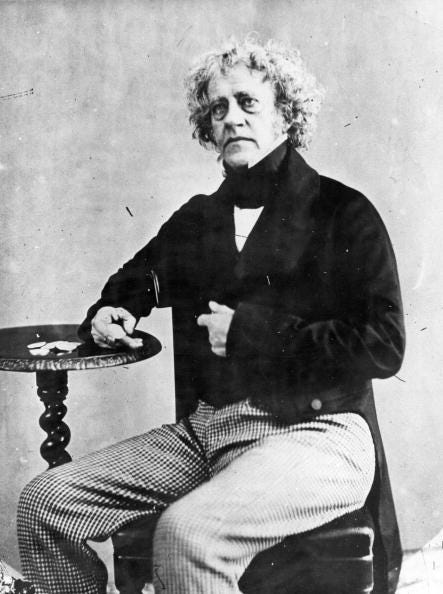TWA from Saturday, September 9, 2017
“Moon-Breath” by Mary Jo Salter from The Surveyors. © Knopf, 2017.
ORIGINAL TEXT and AUDIO - 2017
On this date in 1776, the Continental Congress settled on a name for its new nation: the United States of America. Because the term was first used in both rough and final drafts of the Declaration of Independence two months earlier, Thomas Jefferson was given the credit for coming up with the name. By September, the Declaration of Independence had made its way across the Atlantic Ocean to Great Britain.
The Second Continental Congress served as the new nation’s de facto governing body during the Revolutionary War. Once the new name was settled, its delegates issued a formal declaration stating: “That in all continental commissions, and other instruments, where, heretofore, the words ‘United Colonies’ have been used, the stile be altered for the future to the ‘United States.’”
It was on this day in 1839 that Englishman John Herschel took the first glass plate photograph. Cameras, and photography, weren’t new: the Chinese had been experimenting with pinhole cameras as far back as the fifth century B.C. A pinhole camera is a box with a tiny hole in the front. When light enters through the hole, an upside-down image is displayed on the inside back wall of the box. They also knew that some chemicals changed when exposed to light. They just couldn’t quite figure out how to combine the two so that an image stayed permanent. Images were proving too light sensitive and would quickly fade.
In 1819, Herschel, who had been a fair-to-middling student, but an excellent scientist, discovered that sodium thiosulphate (“hypo”) could be used a solvent for silver-halide photography. Fixing and stabilizing an image had been a problem, up to that point, but Herschel had figured it out. Unfortunately, he was also a very busy polymath, with interests in botany, mathematics, law, philosophy, and geology. He was even an important early pioneer in astronomy, naming several of the moons of Saturn and Uranus and witnessing Halley’s comet in South Africa. In September of 1839, a friend wrote to him of Louis Daguerre’s experiments with images and Herschel immediately went to work. In just a few days, he successfully produced a photograph of his father’s 40-foot telescope. It is the earliest remaining photograph on glass to date. Daguerre would achieve fame for his “daguerreotype” process, but it wouldn’t have been possible without John Herschel.
John Herschel was the first to introduce the words “emulsion,” “positive,” and “negative.” The word “photography” had already been used as early as 1834, but Herschel seemed unaware. Herschel coined the word “Photography” from the Greek word “photos,” for “light,” and “graphos,” for “drawing” — thus “drawing with light.” He once said, “Every student who enters upon a scientific pursuit, especially if at a somewhat advanced period of life, will find not only that he has much to learn, but also much to unlearn.”
John Herschel died in 1871 at the age of 79. He was given a national funeral and buried in Westminster Abbey. Charles Darwin was so inspired by John Herschel’s life and work that he requested to be buried next to Herschel.
In his diary, John Herschel once wrote, “What God sends is welcome.”
Forty-eight years ago today, in 1969, the Official Languages Act came into force in Canada, making French equal to English throughout the Federal government. The act was introduced by Prime Minister Pierre Trudeau’s Liberal government and was intended to promote national unity and improve relations between Canada’s English-speaking population and the French Canadians of Quebec.
In 1971, Trudeau claimed that “Although there are two official languages, there is no official culture.” But talking about equality did not satisfy Canadians on either side of the language divide. The act failed to reduce tensions between groups and was unpopular with both. Plenty of Quebec natives felt the act sidestepped more urgent political concerns, while many English speakers felt the French language was being forced upon them. Almost five decades later, however, the majority of Canadians are in favor of bilingualism and the act that made it an official part of their culture. Eighty-eight percent of Canadians who responded to a 2016 Nielsen survey supported the Official Languages Act. About the same percentage agreed that Canada’s prime minister ought to be bilingual and that major national events should occur in English and in French. Some feel bilingualism puts Canada a step ahead of other powerful nations. “Canada’s gradual acceptance of linguistic duality has made us more open, more inclusive, and readier to welcome others in our society,” said the Commissioner of Official Languages, Graham Fraser. “This puts us in a significantly different place than the United States, Britain, and much of Europe.”
The religious conference known as the Colloquy of Poissy opened on this date in 1561. It was a debate between French Catholics and Protestants, who were also known as Huguenots. The 16th century was a time of great cultural and artistic expansion in Europe. The invention of the printing press helped speed the dissemination of new ways of thinking, and the Protestant Reformation, sparked by Martin Luther, had reached France by 1540. The French king at that time — Francis I — was tolerant of and even open to new ideas, but the Protestants pushed him too far when they began posting placards that were harshly critical of the Roman Catholic Church. Francis began persecuting the Huguenots. His successor, Henry II, carried on this practice. Henry died in 1559, and his widow, Catherine de’ Medici, became heavily involved in state affairs during the successive reigns of their three young sons. It was the second son, the 10-year-old Charles IX, who was king when the colloquy was held in 1561.
Catherine de’ Medici was the niece of the pope, and she was also a true child of the Renaissance. She valued freedom of thought, and she also saw how the persecution of the Huguenots had had little effect on calming the religious tension in France. She thought it would be better to be more conciliatory, so she called for a meeting between Protestant and Catholic leaders. The two sides were dressed as though they were opposing teams, with the Cardinals in red and the Protestant leaders in somber black. The colloquy began civilly enough, but when a Protestant leader named Théodore de Bèze said that the bread and wine of Holy Communion had nothing to do with the body and blood of Jesus Christ, the Catholics accused him of blasphemy. Although some small steps were made toward peaceful coexistence, the colloquy ended in failure when its members disbanded, against the wishes of the queen, in October.
Although Catherine made many concessions to the French Protestants at first, she really didn’t understand their theological position, and only viewed the conflict from a political angle. Eventually the monarchy reverted back to the savage persecution of the Huguenots, and the French Wars of Religion continued until King Henry IV, a Protestant, converted to Catholicism as a political move in 1593. He issued the Edict of Nantes, which called for religious tolerance and brought about an uneasy peace, in 1598.





